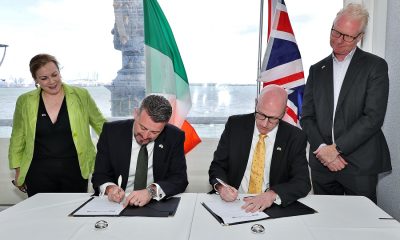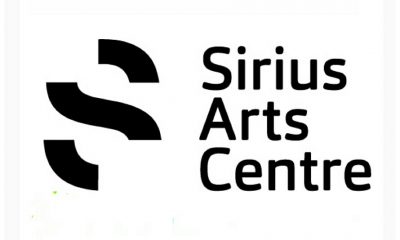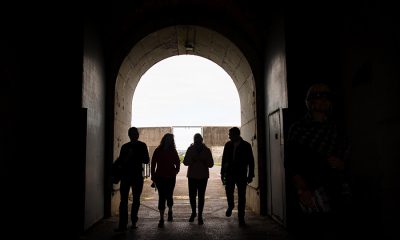Events & Entertainment
Dickie To Rock The GAA
- Share
- Tweet /home/eastcork/public_html/wdir/wp-content/plugins/mvp-social-buttons/mvp-social-buttons.php on line 68
https://www.cobhedition.com/wdir/wp-content/uploads/2009/12/DickieRock.jpg&description=Dickie To Rock The GAA', 'pinterestShare', 'width=750,height=350'); return false;" title="Pin This Post">
Friday 11th December
Dickie Rock in Concert – Cobh GAA Hall, Tel: 021 4811416 – www.cobhgaa.com
 Like Brendan Bowyer and a handful of other artists, Dickie Rock has transcended the ranks of showband vocalist to that of legend. During a twenty year stretch from 1963 through 1983 he had more hit singles in Ireland than any other Irish artist except Brendan Shine and all but the five of the world’s greatest International acts.
Like Brendan Bowyer and a handful of other artists, Dickie Rock has transcended the ranks of showband vocalist to that of legend. During a twenty year stretch from 1963 through 1983 he had more hit singles in Ireland than any other Irish artist except Brendan Shine and all but the five of the world’s greatest International acts.
Dickie’s story started in his home town of Cabra West, outside of Dublin. Dickie started as an apprentice welder, but at an early age, he was already singing in the church choir and at 16, joined his first band, The Melochords. The Melochords would go on to become the foundation for the famous Cadets Showband which featured Eileen Reid, but Dickie had already moved on. He also started a beat group, Dickie Rock and the Echoes, but they were short lived. When Butch Moore left beat group, The Blue Clavons, to join the Capitol, Dickie took the front spot replacing Butch. Said Dickie of these times in a 1968 interview in Spotlight, “I was just dossing about, but really I was trying to find myself.”
Dickie’s big break came in 1962, when the lead singer for the fledgling Miami Showband, Jimmy Harte emigrated to the United States. Dickie auditioned for the job and when he was accepted, the stage was set for one of the showband era’s greatest acts. Within a short span of time, Dickie and the Miami were competing directly with Brendan Bowyer and the Royal showband, trading hit records and record crowds wherever the two bands played. Their first hit single was There’s Always Me which hit number one in the Irish charts in 1963.
Unlike Bowyer and other singers who imitated the gyrations of Elvis, Dickie chose to emulate the great crooners of the day like Sinatra and Bennett. His appeal was rooted in a sexy gesture or a playful wink, not his good looks or athletic ability.
In 1964, Dickie and the Miami appeared at the prestigious London Palladium alongside British superstar Petula Clarke. Throughout the sixties, Dickie made hit record after hit record. In 1965, Ireland entered it’s first Eurovision song contest and Dickie sang in the Irish National Song contest with “I Still Love You,” but lost out to Butch Moore who became Ireland’s first contestant. The following year, Dickie sang three songs in the Irish Contest and finally broke through, being selected to represent Ireland in Eurovision with “Come Back To Stay.” Although he would finished fourth in the voting, his record was a number one hit in Ireland and he returned to a hero’s welcome. Dickie would sing in the Irish Song contest again in 1969 (Now Do You Believe Me – 3rd place) and finally in 1977 (I Can’t Go On Without You – 6th place).
Despite these personal successes, all was not well with Dickie and the band. In 1967, the Miami split up with Murty Quinn and four other members leaving to form the Sands Showband. They drafted young Vampires vocalist Tony Kenny to front the band, leaving Dickie to reform the Miami with an entirely new cast which included Fran O’Toole, Des McAlea, and Paul Ashford (who would go on to the rock band Stepaside years later). The new look Miami continued the band’s record of success and in 1968 Dickie had yet another number one hit with “Simon Says.”
Despite the fact that Dickie was so successful, he wasn’t getting rich in the business. In Vincent Power’s book, Send ‘Em Home Sweatin, Dickie states, “I was on the same money as the rest of the lads in the band, but I had five number one records…during my time with the Miami, I didn’t make anything like the kind of money I should have made–nothing compared to what Bowyer was making.” The tension finally came to a head when in 1972, Dickie left the Miami to go out on his own and formed Dickie’s Band. He even stayed with the same manager, Tom Doherty, until 1975.
Dickie’s second decade started with him fronting his own band and although the dancing scene was changing, he maintained his popularity by beginning to move into the growing cabaret scene which was flourishing in Dublin and in some places around the country. In 1977, Dickie had yet another number one hit with “Back Home Again.” By the time the ballroom scene had ground to a halt and many of his peers had either thrown in the towel or moved to the United States, Canada, or Europe to salvage their careers, Dickie was already enjoying continued success as Ireland’s number one cabaret act.
Through the nineties and today, Dickie remains one of Ireland’s most enduring entertainers. He continues to tour and draw big crowds wherever he appears.
Discography:
Singles with the Miami:
There’s Always Me / Boys – #1 Irish Charts
Pye/Picadilly Records – 7N.35154 – November, 1963
I’m Yours / Please Don’t Drag That String Around – #1 Irish Charts
Pye/Picadilly Records – 7N.36185 – March, 1964
From The Candy Store On The Corner / Twenty Flight Rock – #1 Irish Charts
Pye/Picadilly Records – 7N.35202 – September, 1964
Just for Old Times’ Sake / Me Not You – #2 Irish Charts
Pye Records – 7N.15729 – December, 1965
Round and Around / Little Baby – #2 Irish Charts
Pye Records – 7N.15750 – January, 1965
Every Step of the Way / Rock n’ Roll Music – #1 Irish Charts
Pye Records – 7N.15855 – May, 1965
I Left My Heart in San Francisco / One by One – #4 Irish Charts
Pye Records – 7N.15891 – August, 1965
Wishing It Was You / Georgie Porgie – #1 Irish Charts
Pye Records – 7N.15977 – October, 1965
Come Back To Stay / Can’t Make Up My Mind – #1 Irish Charts
Pye Records – 7N.17063 – February, 1966
Darling I Love You / Suspicion – #4 Irish Charts
Pye Records – 7N.17206 – November, 1966
When You Cry / To Whom It Concerns – #7 Irish Charts
Pye Records – 7N.17253 – January, 1967
Baby I’m Your Man / Mairzy Doats And Dozy Doats – #13 Irish Charts
Pye Records – 7N.17316 – May, 1967
Simon Says / Somebody Else Is Taking My Place – #1 Irish Charts
Pye Records – 7N.17527 – June, 1968
Christmas Time and You / The Little Boy Santa Forgot – #10 Irish Charts
United Artists Records – UP.2256 – November, 1968
The Wanderer / Uncle Tristian’s Moonship
Target Records – 7N.17806 – 1969
Emily / Waterfall – #12 Irish Charts
United Artists Records – UP.3507 – April, 1969
Burning Bridges / Run To The Clown
Pye Records – 7N.45014 – 1970
When My Train Comes In / Day by Day – #15 Irish Charts
Pye Records – 7N.17966 – July, 1970
My Heart Keeps Telling Me / We Did It Together
Pye Records – 7N.45062 – May, 1971
Cathedral In The Pines / Go – #15 Irish Charts
Pye Records – 7N.60005 – October, 1971
Till Mini Monster EP / Just For Old Times Sake / Georgie Porgie / The Candy Store – #9 Irish Charts
Pye Records – PMM.601 – January, 1972
Lollipops, Lace and Lipstick / When You Cry
Pye Records – 7N.60024 – September, 1972
Lot 109 / Teardrop on Teardrop
Pye Records – 7N.45137 – 1972
Solo Singles
The Last Waltz
Pye Records – May, 1973
Maxi Single
Solo Records – December, 1973
Whoever Finds This
Solo Records – SOLO 138 – August, 1975
Back Home Again – #1 Irish Charts
Solo Records – May, 1977
It’s Almost Like A Song / Now That My Love Has Gone – #18 Irish Charts
Solo Records – SOLO 151 – March, 1978
Coward of the County / She believes in Me – #11 Irish Charts
Release Records – RL.995 – January, 1980
Here In My Heart / Yours
Phillips Records – 6156-026 – 1982
When The Swallows Come Back From Capistrano – #24 Irish Charts
Phillips Records – August, 1982
The Wedding – #18 Irish Charts
Records Services – September, 1988
I’ll Never Stop Wanting You / Instrumental Version – #10 Irish Charts
Chart Records – PZA 046 – February, 1989
Come Home To Ireland for Christmas – #25 Irish Charts
Chart Records – November, 1989
Albums with the Miami:
The Miami All-Stars on
Marble Arch – MAL 700 – 1967
Ten Of The Best
Marble Arch Records – MAL 750 – 1967
The Wind Will Change Tomorrow
PYE Golden Guinea – GGL 0452 – 1970
Dickie Rock & The Miami Showband
Hallmark Records – HMA 233 – 1972
Solo Albums:
Till
Harp Records – HPE 624 – 1980
Dickie
Solo Records – SOLO 7008
-

 Announcements2 weeks ago
Announcements2 weeks agoJOB OPPORTUNITIES Watersedge Hotel are currently hiring for the following positions
-

 Local News2 weeks ago
Local News2 weeks agoLandmark Partnership: Cruise Ireland and Cruise Britain Join Forces to Boost Cruise Tourism
-

 Events & Entertainment2 weeks ago
Events & Entertainment2 weeks agoSarah Browne Exhibition at the Sirius Arts Centre
-

 Local News2 weeks ago
Local News2 weeks agoSpike Island’s After Dark Tours return: Explore the haunting history of iconic prison island once dubbed “Ireland’s Hell”
-

 Local Soccer1 week ago
Local Soccer1 week agoCobh Wanderers face College Corinthians in 1st Round of Sports Direct Men’s FAI Cup
-

 Local News8 hours ago
Local News8 hours agoCrosshaven RNLI Assist Two on Disabled Yacht
-

 Announcements8 hours ago
Announcements8 hours agoCobh Youth & Social Projects CLG have the following vacancies
-

 Local News8 hours ago
Local News8 hours agoCyclists of all abilities encouraged to join Fort2Fort Charity Cycle 2024Saturday, 8th June
-

 Events & Entertainment8 hours ago
Events & Entertainment8 hours agoSIRIUS ARTS CENTRE: COMMISSION: Aikaterini Gegisian






